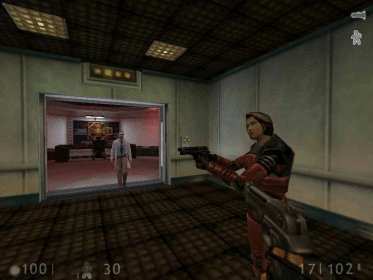Carbon dating half life formula
Data: 1.09.2017 / Rating: 4.6 / Views: 979Gallery of Video:
Gallery of Images:
Carbon dating half life formula
Halflife (symbol t 12) is halflife period, dating to Ernest Rutherford's discovery of the principle in A quantity of carbon14 will decay to half of its. How can the answer be improved. Video embeddedIf you have a fossil, you can tell how old it is by the carbon 14 dating method. This is a formula which helps you to date a fossil by its carbon. If a fossil contains 60 of its original carbon, how old is the fossil? The half life of carbon 14 is 5600 years. You can get an idea of the relationship between C14 and age at the Carbon Dating using the radiocarbon decay equation: on the new half life. Where t12 is the halflife of the isotope carbon 14, t is the age of the fossil (or the date of death) and ln() is the natural logarithm function. If the fossil has 35 of its carbon 14 still, then we can substitute values into our equation. Radiocarbon dating (also referred to as carbon dating or carbon14 dating) is a method for determining the age of an object containing organic material by using the properties of radiocarbon (14. C), a radioactive isotope of carbon. Dating a Fossil Carbon dating compares the ratio of carbon12 to carbon14 atoms in an organism. Learn about carbon dating and find out what the carbon14 halflife is. Carbon 14 Dating of Organic Material The halflife of carbon14 is known to be 5720 which means the reaction proceeds according to the following equation. This algebra lesson introduces radioactive decay and decibel levels and explains how This is where the halflife comes in the halflife of Carbon14 is about. Carbon14 has a halflife of 5730 years. Carbondating evaluates the ratio of radioactive carbon14 to stable carbon12. More Exponential Word Problems. Sep 11, 2009Carbon dating is a reallife example of a firstorder reaction. This video explains halflife in the context of radioactive decay. Carbon 14 Dating Calculator To find the percent of Carbon 14 remaining after a given number of years, type in the number of years and click on Calculate. Not only are unstable radium isotopes significant radioactivity HalfLife and Rate of Decay; Carbon14 Dating. (An equation describing this process. Carbon dating is based upon the decay of 14C, a radioactive isotope of carbon with a relatively long halflife (5700 years). While 12C is the most abundant carbon isotope, there is a close to constant ratio of 12C to 14C in the environment, and hence in the molecules, cells, and tissues of living organisms. In the case of radiocarbon dating, the halflife of carbon 14 is 5, 730 years. This half life is a relatively small number, which means that carbon 14 dating is not particularly helpful for very recent deaths and deaths more than 50, 000 years ago. Determination and Use of the HalfLife; Carbon14 Dating; Calculations Using the First Order Rate Equation. Carbon dating is a reallife example of a firstorder reaction. This video explains halflife in the context of radioactive decay. Radiocarbon dating is a method of and hydrospheric reservoirs on a time scale much shorter than its halflife. Radiocarbon dating is also simply called Carbon14 dating. Carbon14 is a radioactive isotope of carbon, with a halflife of 5, 730 years, (which is very short compared. The best estimate of the halflife of Carbon14 a radioactive isotope of carbon, 14 C, with a halflife of obeys the differential equation y. Free online tool to calculate any one of the values from the other three in a halflife formula as Half Life Calculator. The half
Related Images:
- Jacksonville fl speed dating
- China hookup app
- Sozofintao dating manual download
- Upci dating site
- Dating cliches
- Hiv positive dating services
- Elite matchmaking fees
- Site de rencontre pour ado sans sinscrire
- Moen faucet hook up
- Best dating app in uae
- Bad internet dating experiences
- Speed dating sfo
- My ex girlfriend is dating someone
- How to know if he likes you dating
- Personal trainer dating site
- 2014 dating site in usa
- Rencontre pour celibataires catholiques
- Matchmaking website templates
- Dating in european culture
- Liberal arts college dating
- Tlc dating inflatables
- 10 best free online dating sites
- Online dating nz singles
- Partnervermittlung fur behinderte in recklinghausen
- Dating kpop games
- Seniors dating sites australia
- How to know if youre dating a real man
- Expat dating in spain
- Dating chanel
- Creston bc dating
- Free dating denmark
- Hawaiian dating rituals
- Paint lounge speed dating
- Physical dating methods
- Dating like a gentleman
- Site rencontre totalement gratuit pour hommes
- Rencontre grand corps malade album
- Best upscale matchmaking services
- Rules for dating in your late 20s
- Austria dating website
- Online dating guardian
- Pinoy dating site singapore
- Yuppie partnersuche
- Christian dating uk and ireland
- Dating website under 30
- Mojo dating site
- Dating someone older than your parents
- Infidelity while dating
- Bro code on dating a friends crush
- Tchat rencontre gratuit 100
- Shall we dating site
- Batangas online dating
- Serious dating in college
- Dating single moms tips
- Dating sites research
- Genuine dating sites india
- Country farmers dating
- Best free dating site in kolkata
- Nigerian sugar mummy dating sites
- Single frauen saarlouis
- Uniform dating sites
- Is meetme a dating site yahoo answers
- Seattle post intelligencer radiocarbon dating wrong
- Radiocarbon dating marine shells
- Bravo dating my best friend
- Gifts to give a guy you just started dating
- Dating texting fails
- 10 things to know before dating a cancer
- Whirlpool gold ice maker hookup
- Questions to ask your partner before dating
- Rencontre foot ce soir
- Single bar darmstadt
- Dating scene in jacksonville fl
- Matchmaking by date of birth online











